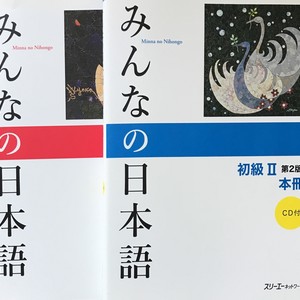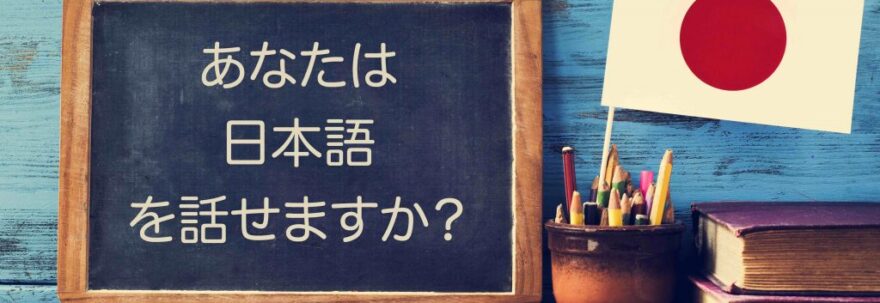Hi there, this week I’m not going to tell you about what it is happening in Europe, I’d like to tell you about my experience with the JLPT (Japanese Language Proficiency Test), also known as Noken.
For those who don’t know about the JLPT, here is a brief introduction. The JLPT can act as a kind of general yardstick. There are five levels of the test, ranging from N5 (easiest) to N1 (most difficult). Most Japanese companies require at least N2 certification, though many will require N1 instead.
General levels (according to the JLPT website):
N5 – Can understand basic Japanese (including katakana, hiragana, basic kanji).
You will need to know about 100 kanji and about 800 vocabulary words.
N4 – Can understand basic Japanese used in daily life.
You will need to know about 300 kanji and about 1,500 vocabulary words.
N3 – Can understand Japanese “used in everyday situations to a certain degree”.
You will need to know about 650 kanji and about 3,700 vocabulary words.
N2 – Can understand Japanese “used in everyday situations and a variety of circumstances to a certain degree”.
You will need to know about 1,000 kanji and about 6,000 vocabulary words.
N1 – Can understand Japanese “used in a variety of circumstances”.
You will need to know about 2,000 kanji and about 10,000 vocabulary words.
The JLPT consists of reading comprehension, listening, grammar, and vocabulary sections. It does not have a speaking component, and you will not be asked to write kanji with your own hand. But you may be asked to select the correct kanji from a series of very similar characters.
The test is offered both overseas and within Japan, twice a year in early July and December. Outside Japan, only one of these testing times may be available. You can look up testing locations and times on the JLPT website:
https://www.jlpt.jp/e/about/points.html
Well, going back to my case, I started to study Japanese in Spain. I found a language school where they had Japanese classes in my hometown. I had one-hour classes twice a week.
We used the book Minna no Nihongo.

When preparing for N5 with Minna no Nihongo, you may be bothered about whether using only Minna no Nihongo will be enough to provide you with everything you need to pass the test. Undoubtedly, Minna no Nihongo is enough for N5. This is because this book covers different topics that help you learn the kanji, grammar, and vocabulary that you need to pass the exam. In fact, studying half of the book (this will cover about 13 chapters) should be enough to pass the JLPT N5. In my case it was. I studied for 6 months every day, about 1.5 hours a day and it was enough for me to pass it.
So I continued with my Japanese classes, with the second part of the book. Then I decided to come to Japan to live. I thought it would be better to get the N4 before coming to Japan because that would help me get an Arubaito.
Okay, before to continue with my history, the difference between each level increases as we progress through the levels, that is, for example, there is more difference (more difficulty) between N4 and N3 than between N5 and N4.
I decided to take the N4 about 7 months before the exam. My teacher told me that I didn’t have enough time to prepare it, but I was determined to try it.
From my point of view, apart from the Minna no Nihongo, you will need a book to prepare the Kanjis for N4. In my case my Japanese teacher provided me with copies to prepare the kanji.
Well, I studied two hours a day every day of the week, including Saturdays and Sundays. 30 minutes Kanji, 30 minutes grammar, 15 minutes vocabulary and 15 minutes listening, of course, having a good Japanese teacher to lead me in my studies was a great help.
About preparing the kanjis as I said before you don’t need to write Kanjis in the exam, but in my case write many times the kanjis with their onyomi and kunyomi helped me a lot to memorize them.
I passed the N4, then I came to Japan. I looked for a Japanese academy from Spain, there are many of them, especially in Tokyo. The classes were from Monday to Friday 5 hours a day, adding that I lived in Japan you can imagine that you learn much faster than studying from abroad.
But first of all, I got the N4 as I told, so I though that I had a great Japanese Level until I arrived to Japan… Why? The first thing you have to do when you arrive in Japan is go to the city hall to register, there they give you the residence card. Here I realized that I did not have a good level of Japanese, I did not understand anything of what they were saying to me, which frustrated me. Perhaps I arrived with too high expectations and this gave me a dose of reality.
You have to keep in mind that if you only prepare for the JLPT you are going to neglect the practice of conversation, because as I said at the beginning in the JLPT there isn’t a speaking test, so this is a point that I neglected.
I went to the academy for 6 months, you learn a lot but on the other hand they are very expensive so my finances did not allow me to continue going to a Japanese academy. In these 6 months, after realizing that I did not have a good level of Japanese when I arrived in Japan, I dedicated myself to going to the academy in the morning and studying at home in the afternoon.
In the academy we used the Minna no Nihongo 2 and for Kanjis the ARC Academy Kanjis book, this one is the one that I most like among the Kanji books.

And I passed the N3 in just 6 months.
For the N3 I did not prepare the listening, because living in Japan I did not consider it necessary, this helped me to have more time to memorize Kanjis, vocabulary and grammar.
But from here the things got more complicated. As I said, I no longer went to the academy and I also started working in an Arubaito, so I had less time to prepare for the N2. The N3 is quite a complicated level but the N2 is on another level, this one is very complicated, you must to memorize many kanjis, Chinese people are lucky because they know the Kanjis, they can’t read them in Japanese but they know the meaning, it is easier for them than for us to prepare for the JLPT.
You need to know roughly 1000 kanji for the N2. If you have already passed the JLPT N3, you only need to learn an additional 350 Kanji. This is roughly the same gap from the N4 to N3, but you should to review the N4 and N3 kanjis,
because those kanjis that you don’t use are gradually forgotten, it’s a shame but I recommend that you review them before the exam, in N2 the reading part is very complicated and I would say almost impossible if you can’t read a large number of Kanjis, the texts are long and furigana is only in 50% of the text.
One of things that I remember is that the number of students who are not from China drops a lot from N2.
I prepared the N2 by myself, for this one I didn’t practice listening because I was still living in Japan, and I didn’t need to, but I dedicated one year studying so hard and I passed it.
I used these books:

One for grammar, one for vocabulary, one for Kanjis and one for the reading part.
Then I started with the N1, I think I was overconfident because I had passed all the JLPTs.
I studied for 1 year then I took the exam, I didn’t prepare the listening for N1 either, I hadn’t needed it for N3 and N2, so why would I need it for this one?
I studied for a year, although the truth is that I did not dedicate the amount of daily hours of preparation that I did for the N2. It is also true that for family and work reasons I did not have as much time to prepare for the N1.
But I was convinced that I was going to pass it, I had achieved it with all the others, I had been living in Japan for a year and a half and I was already able to speak and write in Japanese, so why would I not be able to pass the N1?
I remember that on the day of the exam in the N1 section, only a girl and I were not Asian. I dare to say that around 90% were Chinese.
To pass JLPT N1, you will need to know about 2,000 kanji and about 10,000 vocabulary words total.
I found the exam very, very, very difficult, in the reading part there is no furigana so you have to be able to read all the Kanjis to understand the texts, the grammar and vocabulary also seemed complicated to me, even the listening was difficult. I didn’t have time to finish it. The part that didn’t give me time to answer, I filled in randomly. Despite this, I thought I had a chance of passing it.
Until I got the results… I had only got about 20% of the questions right.
It really made me want to cry, after so many years of study, so many hours of study and money invested, I had only gotten 20% of the questions right. I used the same books of the N2 but for the N1 level.
I took two weeks off to decide what to do. try again or stay with the N2? I decided to try it again, just once more.
I failed the listening part too, but I needed as much time as possible to prepare the other parts, I had a problem here…
I researched on the internet about how to prepare the listening using the minimum time possible and I found that there were people preparing it with radio and TV apps. So I downloaded the NHK radio app and the 日テレNews app, and I listened to them while going by train, bus, while waiting for a friend, while shopping at the supermarket, and I dedicated all the time that I could to study grammar, vocabulary and practice the reading until the day of the exam.
I really dedicated myself during that time to study and work. Despite so much effort, I barely passed the exam. But it was a great joy to have achieved the N1 after so much effort.



